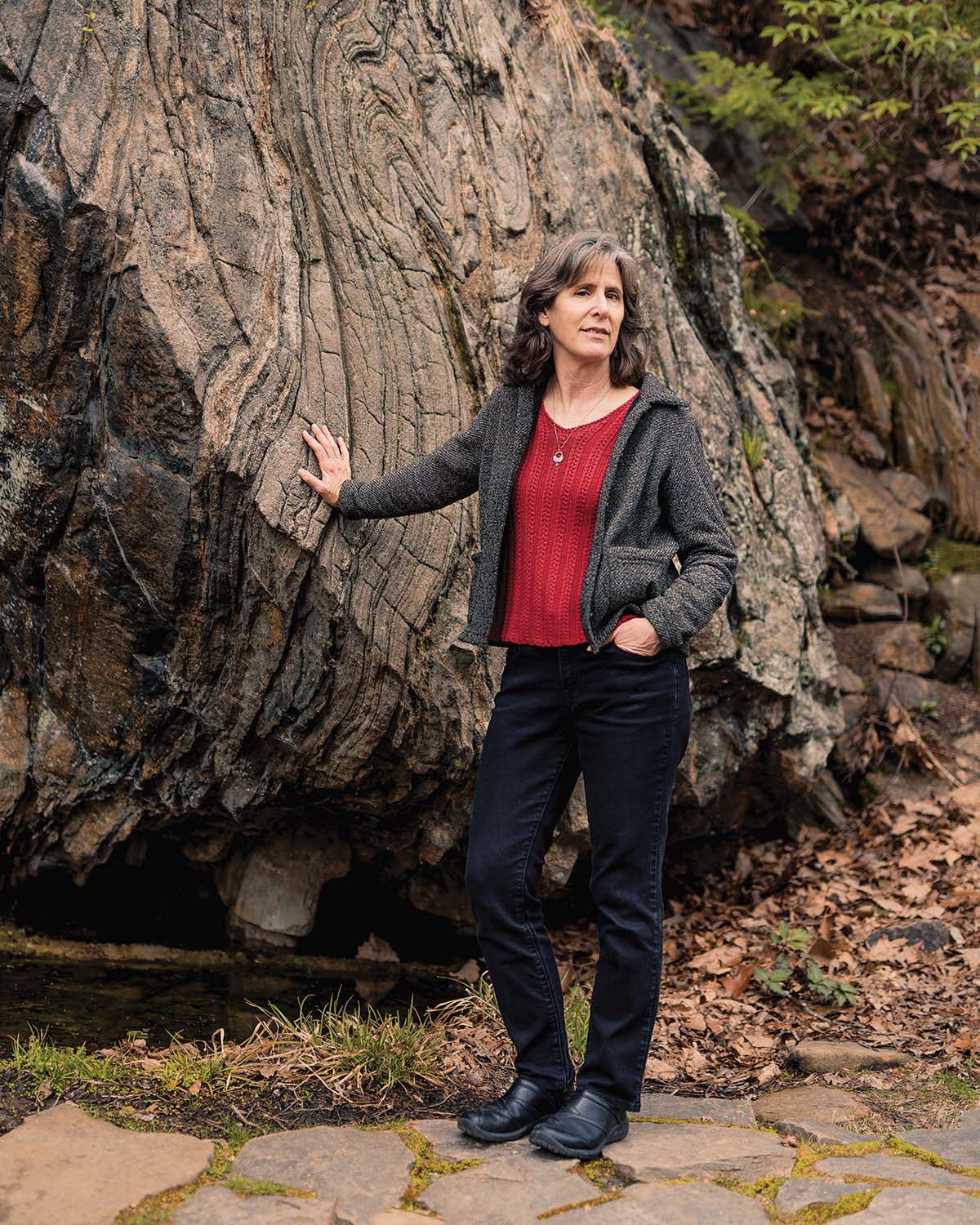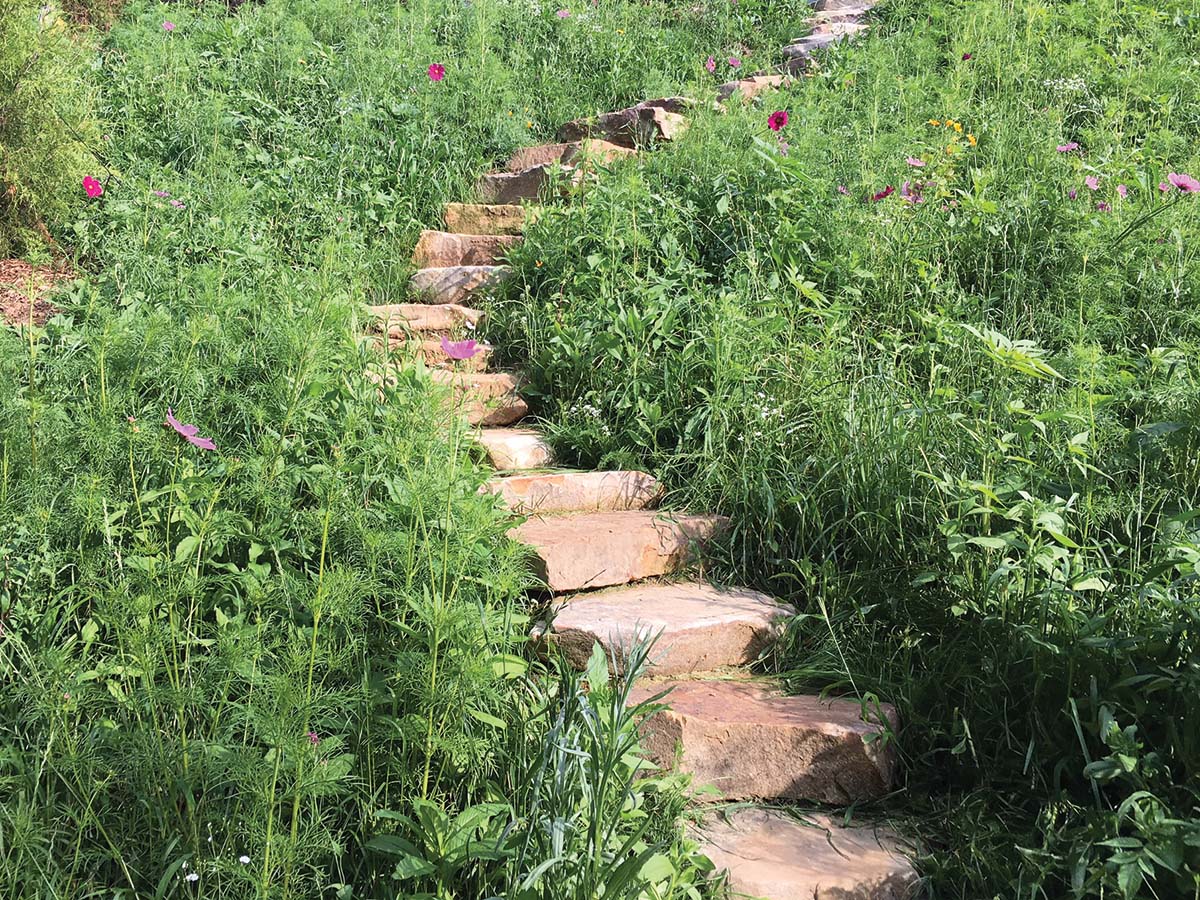
In Midcentury America, a manicured lawn was a suburban homeowner’s biggest point of pride. And according to HGTV.com, more than 75 percent of the country’s residential land remains blanketed in regularly mowed grass. But over the last decade, the look — and the labor that’s required to achieve it — has fallen out of favor with a growing number of environmentally conscious homeowners.
Mary Weber, PLA, principal of Asheville-based Mary Weber Landscape Architecture, explains that, especially in the last three years, more residential clients are opting for “meadow yards” over large swaths of carpet-like turf that are more golf-course-worthy than wildlife friendly. Naturalized yards feature native plants, shrubs, trees, and no-mow grasses. “People want to create yards with plantings that harmonize with the surrounding landscape and attract pollinators and wildlife,” says Weber, “not just because it’s more environmentally friendly — from a practical standpoint, this approach requires much less work.”
Homeowners with lots of lawn are saddled with fertilizing, weeding, mowing, and weed whacking it regularly, or paying others to do so, and the products sold to help them keep up with these chores are often toxic. “My clients who collaborate with me on meadow yards don’t want to buy and use chemical-laden weedkillers, fertilizers, and the like,” notes Weber.
Asheville residents Shelley and Mark McNeill hired Weber to take on their challenging, steeply sloped backyard. “We had a clean slate to work with because our house was new construction,” explains Shelley McNeill, “but the lot lost trees and native plantings because of that.” Both avid birders, the couple set their sights on creating a 1/3-acre yard that could provide food and shelter for birds, insects, and animals. “We really wanted to be good stewards of this land,” she adds.
“I focused on creating something that attracted butterflies, birds, bees, and other species to the McNeills’ yard, and making it low maintenance,” Weber says. As she grappled with finding the right mix of plants and other aspects of site planning, she shares that her next challenge was locating a contractor experienced with installing meadows.
“Fortunately I found one,” she declares.

The McNeills researched certification requirements for three programs whose requirements they wanted their yard to meet: the National Wildlife Federation’s Certified Wildlife Habitat designation, for which a yard must offer water sources and abundant materials animals can use for shelter and nest building; the North Carolina Wildlife Federation’s Butterfly Highway project; and National Audubon Society’s approval appellation for multiple wildflower species.
Weber set about creating a native Southeastern wildflower mix, and wove a riot of lovely native grasses into her plan that added color, texture, and visual interest: Indian Grass, Little Bluestem, Switchgrass, and Canada wild rye. Weber explains that they hydroseeded the hill (when seeds and mulch are mixed), which Shelley notes “was cost effective and now helps control erosion.” Weber also examined the sun trajectory and selected trees that could handle lots of summer sun and winter’s reduced sun and brisk winds.
The McNeills did switch up some trees and vegetables they planted due to the number of bears that roam their grounds. “Bears love carrots; now I plant vegetables they’re not so enthusiastic about,” Shelley says. “We put in trees that stay green throughout winter, like Holly, firs, and Sweet Bay Magnolia, but saw that the male bears love scratching their backs on them. The less hardy ones snapped as a result. We replaced them with bushier evergreens that weren’t as tall and skinny.”
The yard offers other seasonal delights: nesting birds in the spring and frogs, toads, bees, fireflies, and hummingbirds in the summer. “During the fall, the birds enjoy elderberries and migrating monarchs appear,” says Shelley. In winter, they let the hill go dormant, but it still provides shelter for fox, coyotes, bears, snakes, turkeys, songbirds, hawks, and even nesting broadwings.
The McNeills are thrilled that their previously bland yard now buzzes with life all year round. “We feel connected to nature, even though we live in the middle of Asheville,” Shelley says.
As more people opt for naturalized yards, an aesthetic adjustment is necessary too. When well planned, a wild yard can be “visually interesting and beautiful,” says Weber, dispelling the notion that a stunning home landscape can only be achieved with sweat, chemicals, and gasoline-fueled tools.
Shelley feels like backyards should meet similar eco-friendly standards that newly constructed homes do. “We have green-built houses — it’s time to make our yards more supportive of nature, too.”
Mary Weber Landscape Architecture, Asheville. For more information, call 828-281-3153 or see maryweberdesign.com.
